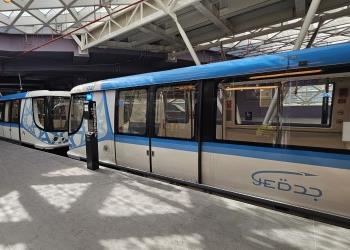
When Philippe Joubert, president of Paris-based Alstom Transmission & Distribution (T&D), attended a Middle East management meeting in Dubai in mid June, he threw down a challenge to the assembled managers. While acknowledging that the Middle East had performed creditably in fiscal 2001/02, contributing Eur 235 million to Alstom T&D's turnover of Eur 3,200 million, Joubert maintained that much more could be done. 'There is a lot of room for improvement. I think we can double our regional turnover, by concentrating on markets where we are weak,' he said.
Joubert's presence at the regional meeting - and his subsequent comments - underlined that the Eur 1,800 million a year Middle East T&D market is a target area for the company. 'If you look at it, the markets that are growing the fastest are Asia and the Americas, and the two sub-regions of Eastern Europe and the Middle East,' he says. 'We need to up our presence in these areas. But the issue that we face is that 50 per cent of our industrial base is in Europe. We need to strategically expand and move that base from Europe to the markets and areas of low cost production.'
Restructuring is very much the order of the day at Alstom T&D. In addition to building up its worldwide turnkey capabilities and developing its software engineering centres in Brazil and India, the company is in the process of relocating some of its industrial base to better cope with the regional and global challenges. Take the transformer division for example. Last year, 70 per cent of its capacity was split between France, the UK and Germany. By 2005, the tables will have been turned, with Turkey, Brazil, China and India accounting for 70 per cent. 'The one area where there will not be so much of a shift will be in high voltage,' says Joubert. 'Out of the 120 factories we have globally, only three are HV GIS [high voltage gas insulated switchgear]. The core industry for GIS will remain in Europe.'
Steps are also being taken to realign the company's sales team. Eighteen months ago, 50 per cent of its sales force was based in Europe. Now it is down to 36 per cent, a figure that is expected to drop to 25-30 per cent within three years.
The Middle East has been one area that has benefited from the realignment in sales, with the regional sales team having been expanded significantly. The increase is part of the company's drive to reduce its dependency on distributors and agents, who traditionally follow the major turnkey projects at the expense of smaller supply orders. 'We are looking to market our products to contractors and clients alike,' says Marco Graziano, regional vice-president for the Near & Middle East. 'Though we prefer to act as a solution provider, limiting our action to turnkey projects is restrictive. We are therefore putting more emphasis on marketing our wide range of loose products.'
Cut-throat competition has been a feature of the Middle East T&D market in recent years. Prices for everything from turnkey HV systems to component supply have tumbled as a result of new players, especially from China and South Korea, entering the market. 'Four years ago, the civils component on a turnkey HV system was 10-15 per cent of the total contract value. Today, it is closer to 25 per cent. Clients still want quality product, but they will not get it if the current pricing trend continues as manufacturers will have to compromise on technical specifications to meet the price levels,' says Graziano.
Alstom T&D has sought to combat the competition by sourcing products from its growing international manufacturing base. Yet, it has had mixed success. Says Graziano, 'Most customers in the region still prefer product of European origin. There are some exceptions: in Oman, I can deliver some equipment from India or Indonesia, which is of Alstom quality but at competitive prices. Other clients don't want to know, even though for transformers for instance, our best factories are now in Turkey.'
Undeterred, the company is planning to step up its regional presence. In certain markets, such as Kuwait, Bahrain, Qatar, the UAE and Syria, Alstom T&D can already claim to have a leading position with utilities, having won a succession of HV substation and control centre contracts. It has also secured major orders from engineering, procurement and construction (EPC) contractors. In 2000, it picked up the 400-kV substation package on the Jebel Ali D repowering project from the South Korean main contractor, Hyundai Engineering & Construction Company. Last year, it was awarded by Italy's Enelpower the 220-kV substations and power island subcontract on the Ras Laffan independent water and power project (IWPP).
Nevertheless, it is punching well below its weight in the region's biggest markets, Saudi Arabia and Iran. 'Saudi Arabia is a market where you have to be local. All our major competitors have local companies, but we only have project and engineering support offices. That has to change,' says Graziano.
In Iran, the aim is to be more local too. 'We have some joint ventures there which are not fully developed. We have a partnership with Fulmen, which is our exclusive agent. That means that nearly all our sales are going through one channel. Due to the highly diversified product range, a single representative cannot effectively handle all Alstom products, which has prompted us to explore other options, including joint ventures,' says Graziano.
Exchange rate: $1=Eur 0.986
AH
You might also like...

Petrofac awards Adnoc carbon capture sub-contract
18 April 2024

Neom tenders Oxagon village school construction
18 April 2024

Clarifications advance for Neom renewable projects
18 April 2024

Alstom wins Jeddah airport deal
18 April 2024
A MEED Subscription...
Subscribe or upgrade your current MEED.com package to support your strategic planning with the MENA region’s best source of business information. Proceed to our online shop below to find out more about the features in each package.








